For a public healthcare organization, there’s a sweet spot to strive for in which a staff is well-utilized but not overworked, while patient care is effectively delivered with minimal wasted resources.
This sweet spot is a moving target, since no two days in healthcare are exactly alike. However, public health managers are creative and determined when it comes to helping their teams succeed. Toward that end, workforce analysis is an important tool for examining the state of a staff in order to identify areas for improvement.
Effective use of technology is integral to workforce analysis and effective staff utilization. In the sections below, we’ll discuss the importance of tools like enterprise resource planning software and data analytics for both gauging utilization and helping your team operate more efficiently.
Workforce Analysis in Public Health: How It Works
Workforce analysis is a process for determining how effectively a staff’s time and efforts are being utilized. This process is typically applied to employee recruitment, employee retention, and other staffing concerns, as well as financial planning and patient care decisions.
Workforce analysis uses both employee data and financial data and involves data collection, analysis, and interpretation. Metrics may include service-to-staff ratio, staff idle time, task completion rates, and return on investment calculations.
Workforce analysis, and the information that such analysis uncovers, are affected by variables like staff skill sets, service demand, and available resources. In public health settings, where financial and human resources are often strained, workforce analysis is especially helpful for unpacking insights that lead to more effective resource allocation.
The Role of Technology in Workforce Analysis
Workforce analysis requires a close look at how well an organization utilizes technology. Here are a few essential software tools that should be part of the discussion during workforce analysis.
Enterprise Resource Planning
Enterprise resource planning (ERP) software provides a platform for managing human resources, financial records, and supply chain data. ERP solutions unify different operational areas into a single space. This helps healthcare managers streamline administrative functions and improve resource allocation, ultimately leading to better workforce management and enhanced quality of patient care.
Electronic Health Records
Electronic health records (EHR) are vital in modern healthcare. EHRs reduce paper clutter and improve data access between team members and departments. However, not all EHR systems are created equal. The best EHR software is easy to use, simplifies operations, and comes with helpful support from the provider.
Billing Systems
An effective billing system reflects an organization’s successful adoption of the latest and best software solutions. Modern billing software optimizes workforce utilization by eliminating busy work, reducing errors, and creating a more predictable workflow. Billing software can also provide insights into areas like patient flow, treatment success rates, and financial metrics.
Analytical Data Software
Analytics software uses advanced mathematical processes to draw useful conclusions from large datasets. In public health settings, data analysis is used to identify trends in areas like spending, staffing, and treatment outcomes. The resulting insights support decision-making and forecasting.
Data analytics can occur within ERP software, financial software, or a separate data analysis system.
Advantages of Effective Workforce Utilization in Public Health
If you already know that your organization’s resources are strained, is it worth diverting funds and time for workforce analysis? If the process leads to long-term improvements, then the answer is yes.
Improving the utilization of your workforce helps your team in every area. Resource allocation and decision-making become more efficient, while team members experience better job satisfaction and reduced burnout rates.
Workforce utilization gains also directly benefit patient care. A well-utilized workforce can reduce wait times, improve attention to detail, and give each patient interaction the attention it deserves.
Gauging Workforce Utilization: Challenges and Solutions
Workforce analysis involves navigating some serious obstacles and risks. These include:
- Data privacy and security: meeting legal and ethical standards during data analysis to ensure privacy and data security for patients and staff
- Software integration: bringing new analysis tools into use and ensuring that data migrates smoothly from one platform to the next
- Training: continuously training staff to use the latest software tools and methods
The solutions for these challenges involve a dedicated approach to establishing training procedures and feedback loops. To maintain a workforce utilization approach that’s nimble and adaptive, it’s essential to work with software providers who are similarly dedicated to continuous improvement and support.
Get Better Software to Optimize Public Health Workforce Utilization
To manage your workforce effectively, you need modern software solutions. At Integrative, we provide software systems designed specifically for public health organizations. Our Visual HealthNet (VHN) system streamlines data and records management so your team can perform at its best without wasting excessive time on manual administrative tasks.
To learn more, contact Harris today to request a product demonstration.









